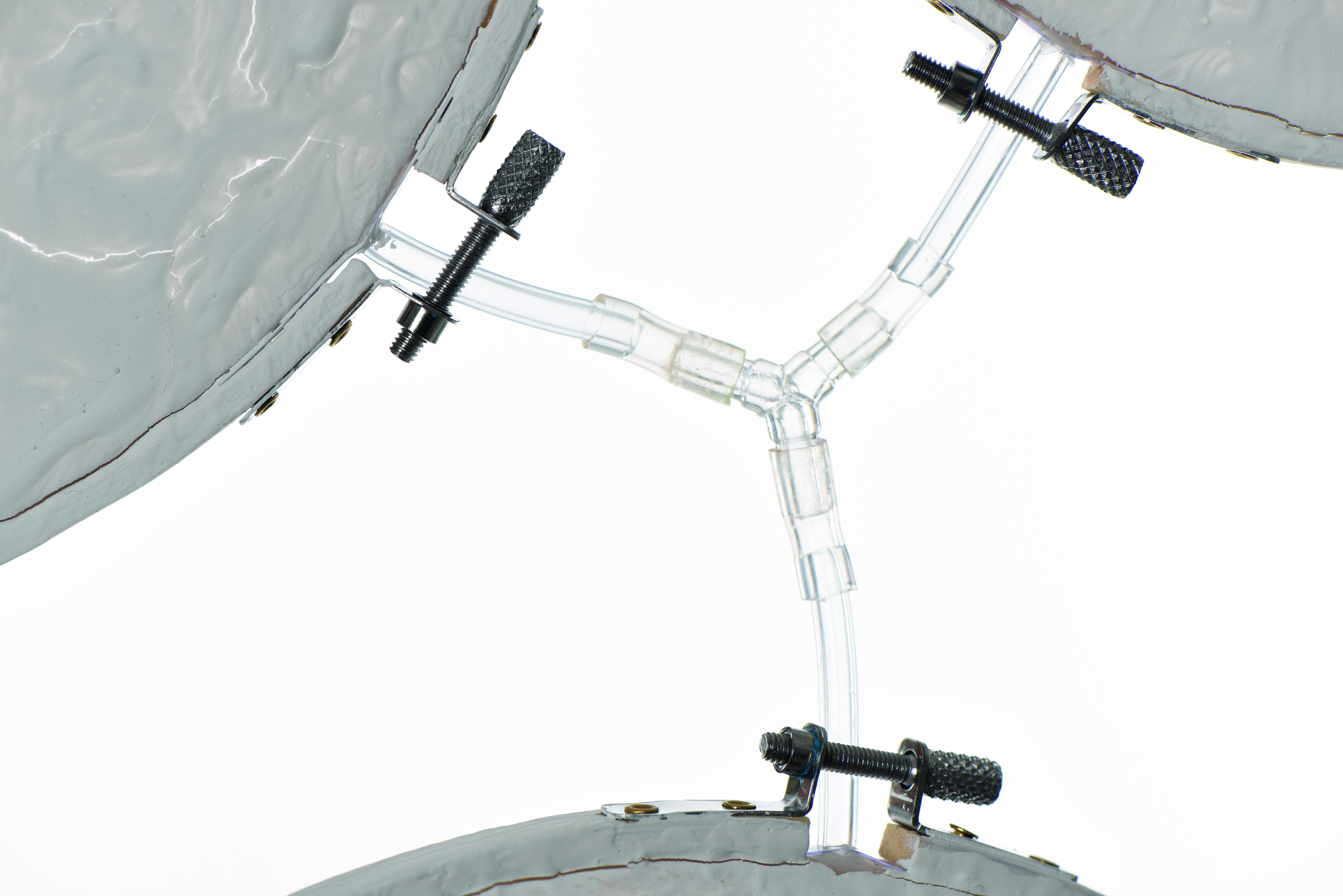Scaling Nature (1): Wrinkles
Supervision: Prof. Christiane Sauer, Ebba Fransén Waldhör, Maxie Schneider, Agata Kycia, Dr. Cécile Bidan, Dr. Lorenzo Guiducci, Dr. Khashayar Razghandi
Cooperation partners: Exzellenzclusters »Matters of Activity. Image Space Material«, Max-Planck-Instituts für Kolloid- und Grenzflächenforschung Golm
Phenomena of natural deformation such as curling lettuce leaves, shrinking skin and wrinkling biofilms were the starting point for bio-inspired textile design concepts in the semester project „Scaling Nature (1): Wrinkles“. Through experimental material studies on formation, flexibility and elasticity, natural phenomena of wrinkling were translated into textile structures with new mechanical, energetic and functional properties: paper screens open up in humidity, wool fabrics become elastic without synthetic fibres and three-dimensional textiles form into tactile patterns. The research-based design project was launched in 2019 as part of the Cluster of Excellence „Matters of Activity. Image Space Material“ with the participation of scientists from the Max Planck Institute of Colloids and Interfaces in Golm.



LIQUID LACQUER
Project: Luis Magg
LIQUID LACQUER explores lacquer with a new set of characteristics: wrinkly, soft and elastic. By applying thick layers of lacquer to a flexible substrate that is stretched in different directions and then released, intricate wrinkle patterns form on the surface.



EXTENSION CHARM
Project: Elena Eulitz
EXTENSION CHARM explores the question of an alternative, less energy consumptive way of producing an elastic textile. Wool yarn is over-twisted to the point where it starts to curl into a helix shaped spring and is then woven to a highly elastic textile. It uses wool as a sustainable resource instead of the chemical synthetic fibre elastane.



DIS/COVER
Project: Samira Akhavan
DIS/COVER is a Jacquard woven textile that displays a range of three-dimensional, haptic textures in one continuous surface. Using the technique of weaving multiple layers and combining yarns with counter-acting qualities, the fabric forms a playful textile landscape that can be explored by touch.



HYDROWEAVE
Project: Juni Neyenhuys, Stefanie Eichler
HYDROWEAVE is a responsive textile utilising the principle of „hygroscopic movement“ – the swelling and shrinking of natural fibres. Cellulose yarn is woven into square modules and joined together to a spatial membrane. When exposed to water the yarn swells which forces the textile modules to curl and open.



THE FLIP
Project: Xingwen Pan
THE FLIP is an interactive, bi-stable textile surface prompted by the touch of a finger. When you press on one of the tips, the fabric modules turn inside out. THE FLIP is made by stretching a highly elastic fabric and drawing a pattern of radiating lines –inspired by the gills of a mushroom – with hot melt adhesive. The adhesive inhibits the elasticity of the fabric, which makes the radiating lines self-form into a cone-like pattern.




CURVY SURFACE
Project: Antonia Dönitz
Curvy Surface transfers shapes of oscillating waves into a foldable, modular and light-weight textile wall. Rigid wood segments are enclosed in an elastic textile cover and held in place with a seam in between the panels. The seam functions as a textile hinge, creating a bi-stable structure that enables a folding of the surface in various directions.



CRACKED SHADING
Project: Katrin Berger
CRACKED SHADING is an experimental shading device consisting of multiple translucent air pockets coated with paint. The spheric-shaped modules are activated through a pneumatic system, making the paint crack as the pocket expands, which lets light though.CRACKED SHADING is inspired by the baking bread process, where the rapidly rising dough forms cracks in the surface.




EX_FLUID
Project: Vanko Zhou
The project EX_FLUID explores how transparent paper wrinkles when exposed to different types of liquids, such as water, borax and citric acid. Single drops of liquid are applied by hand to large sheets of paper with small slits cut into the surface. EX_FLUID explores the tension between controlled, repeatable parameters and accidental, random, organic formations.







